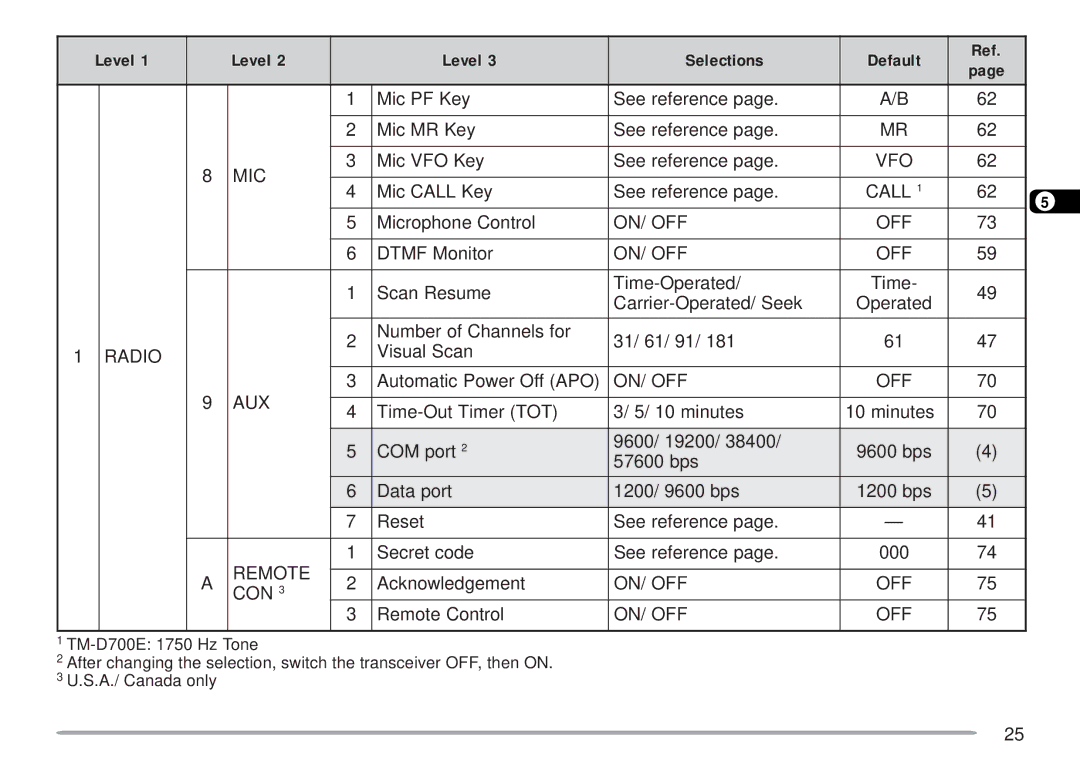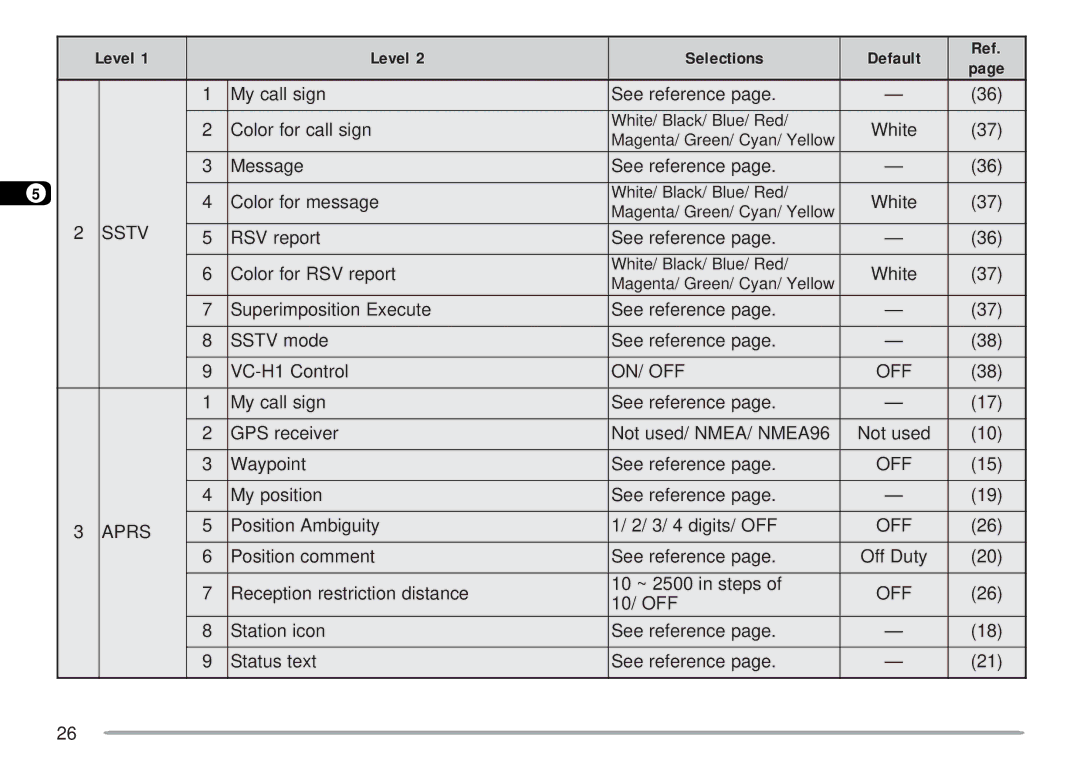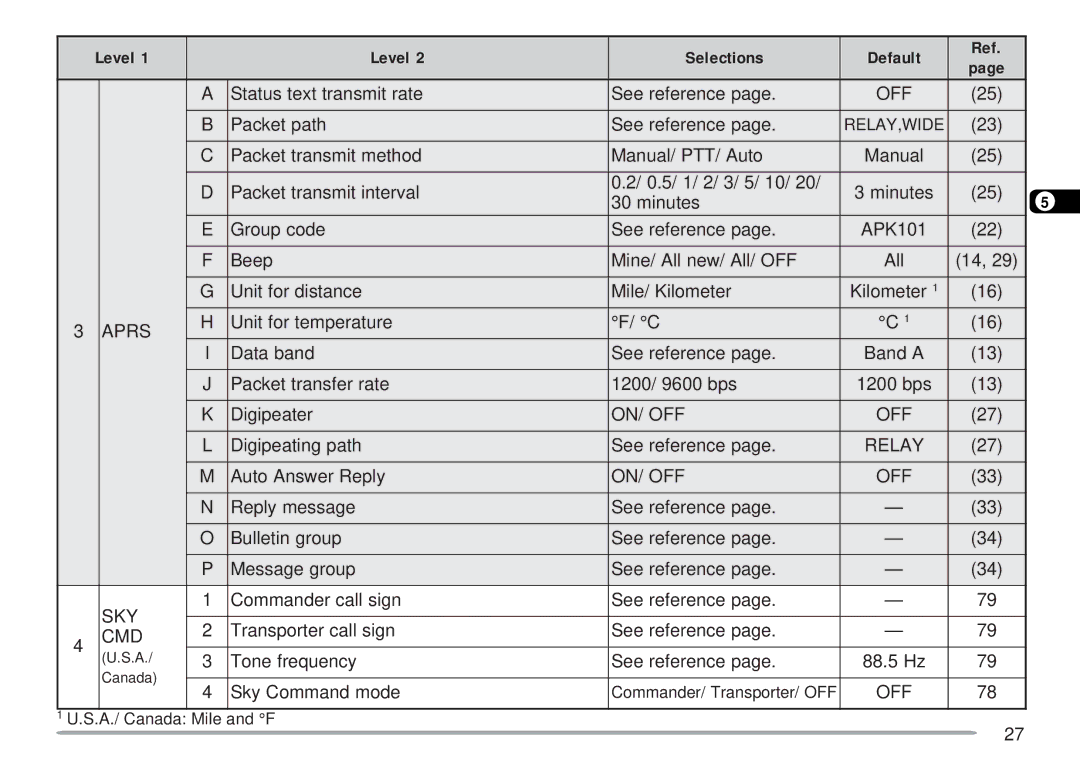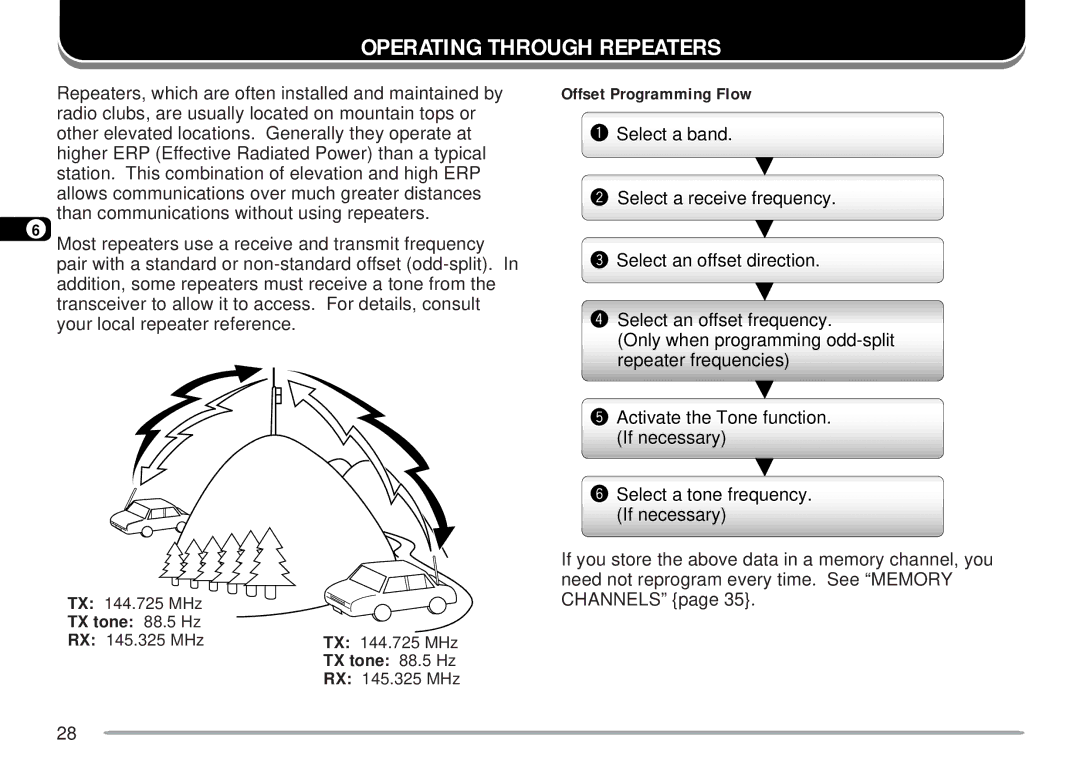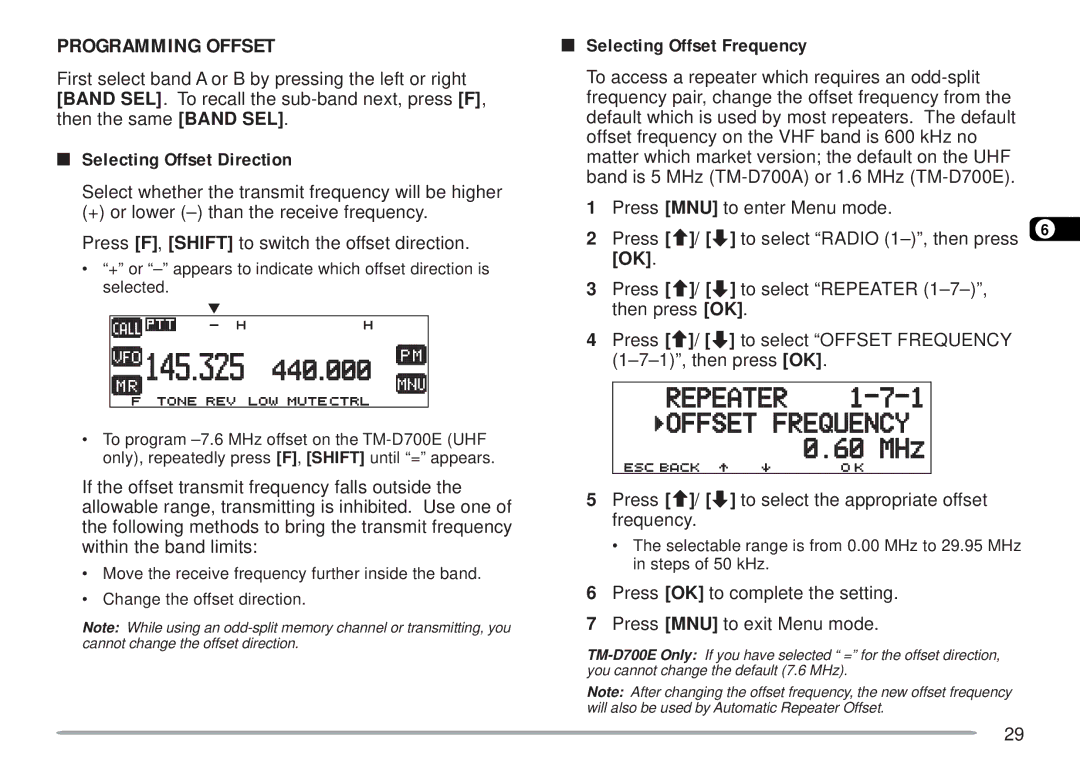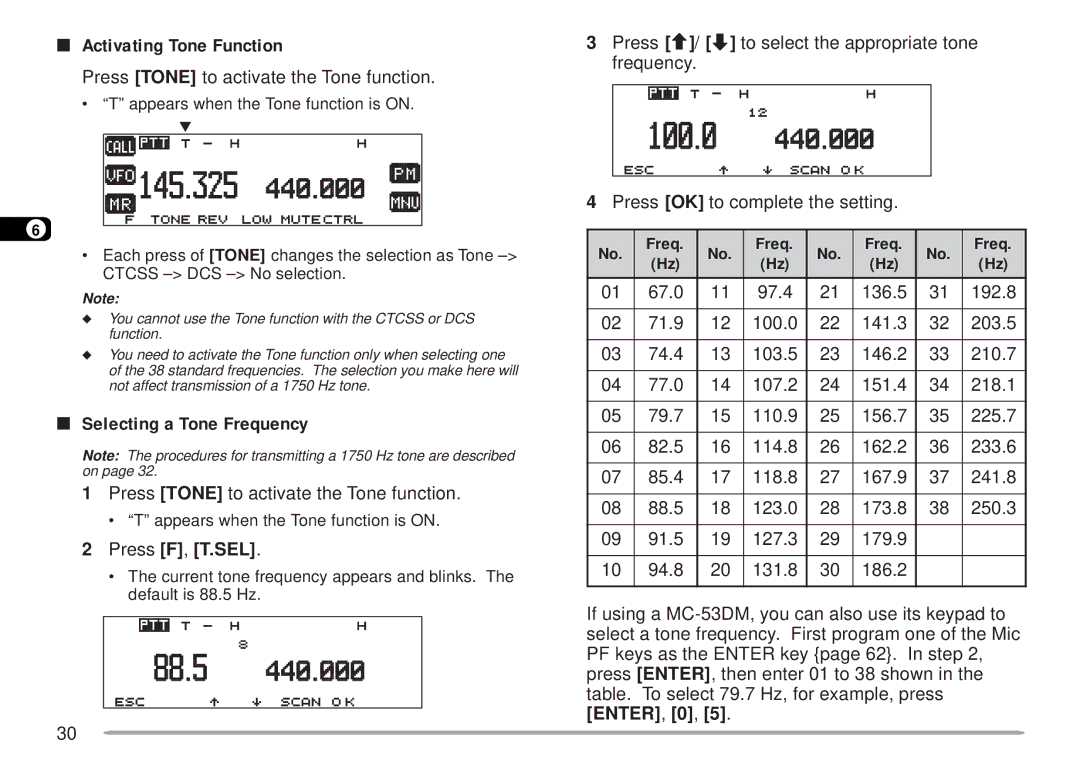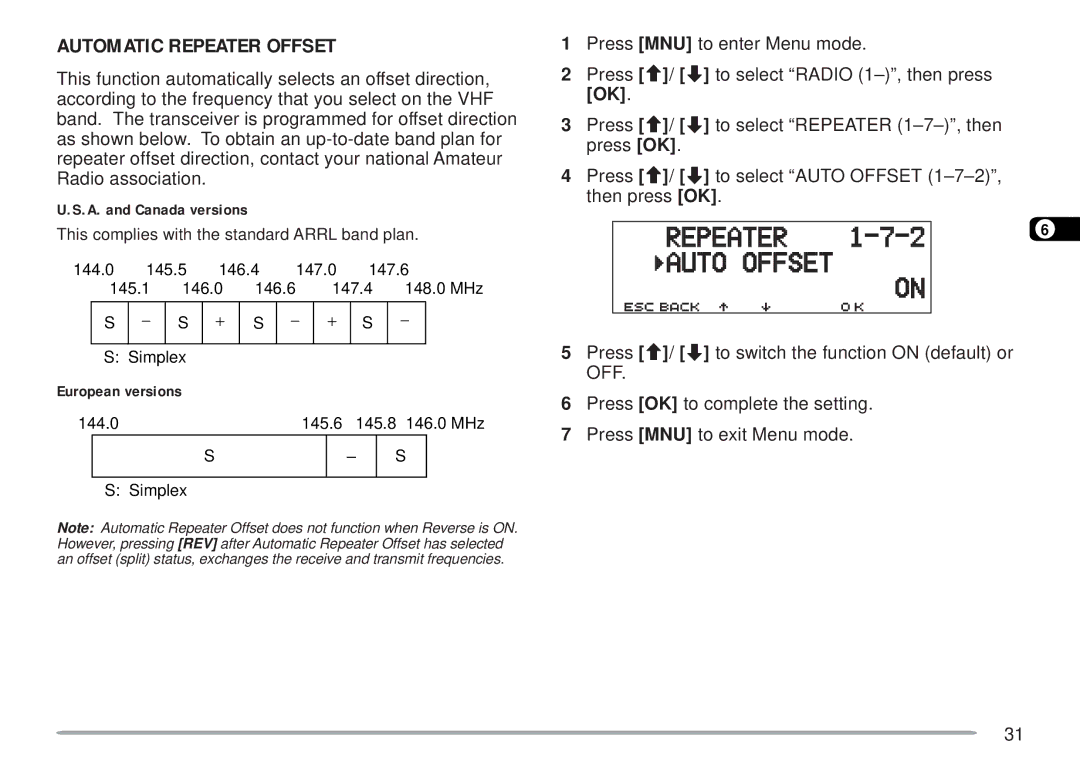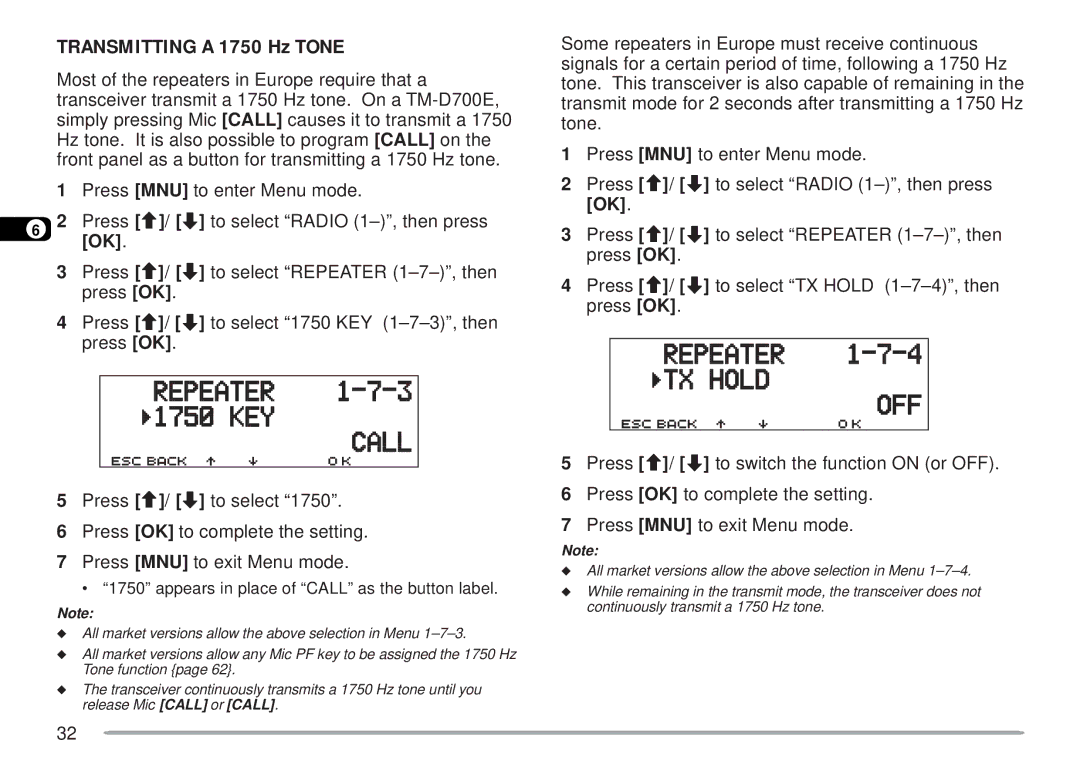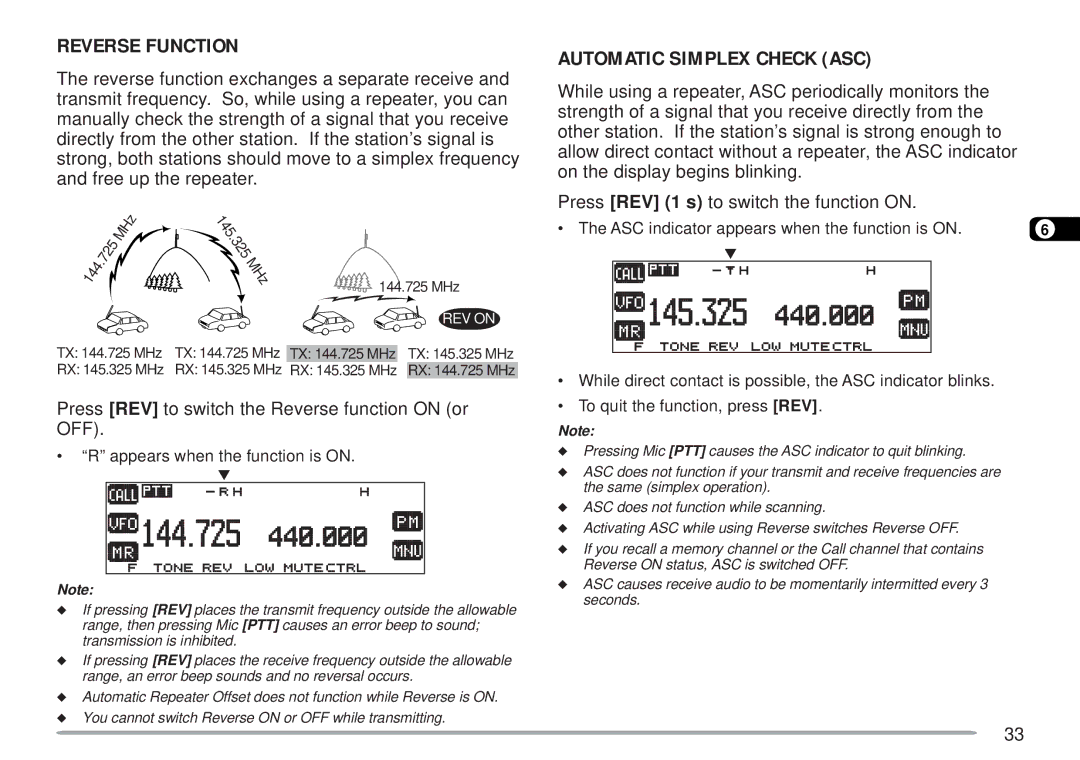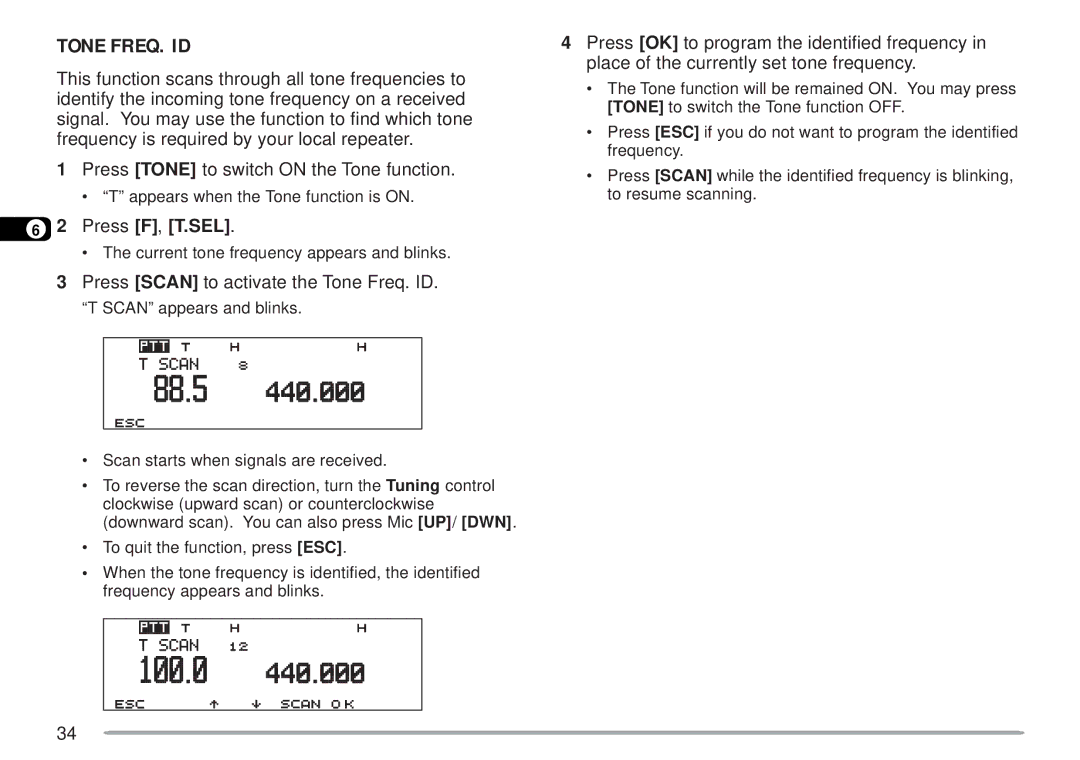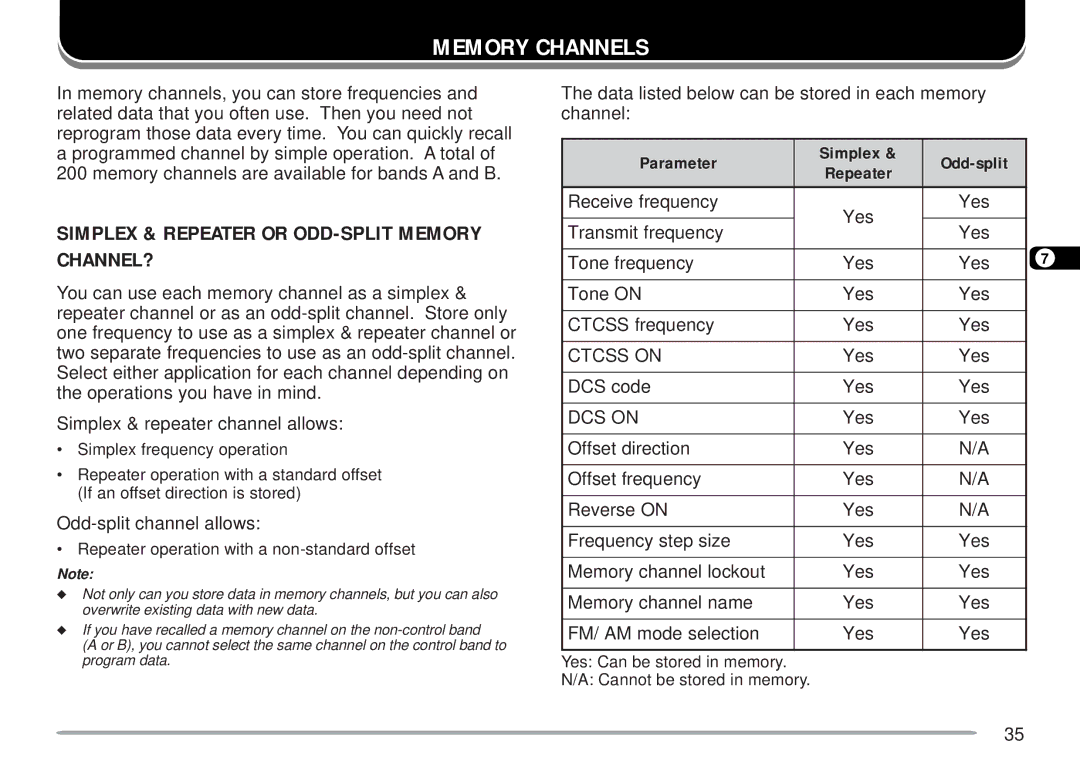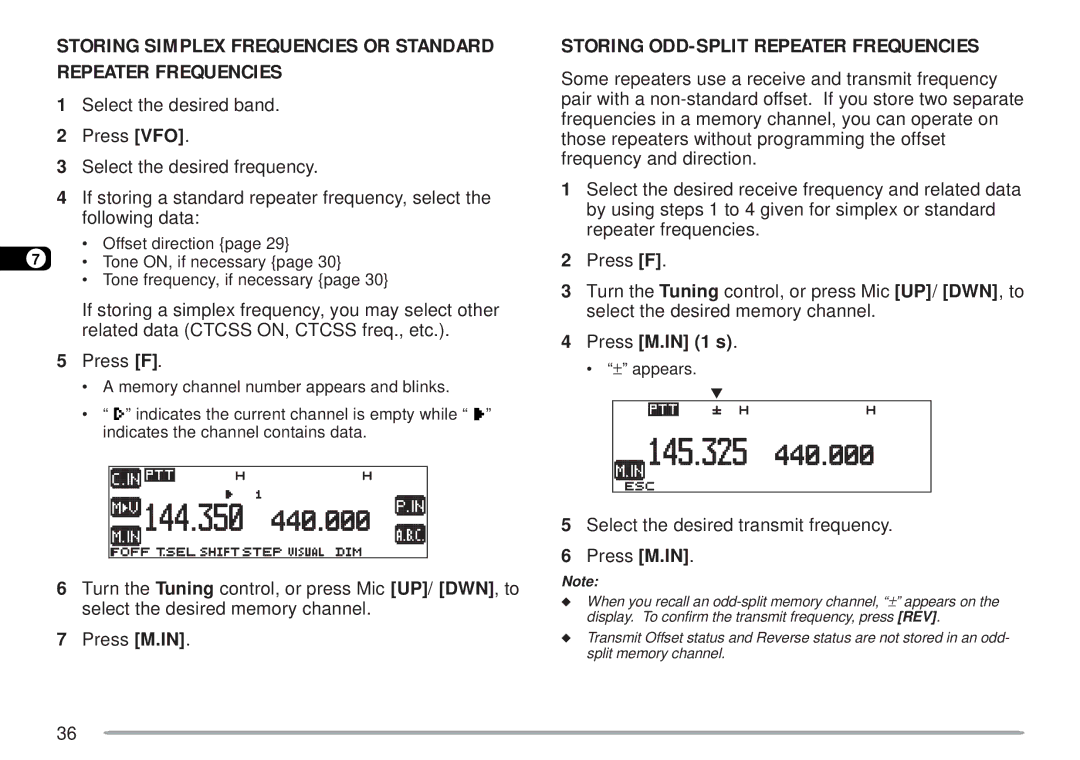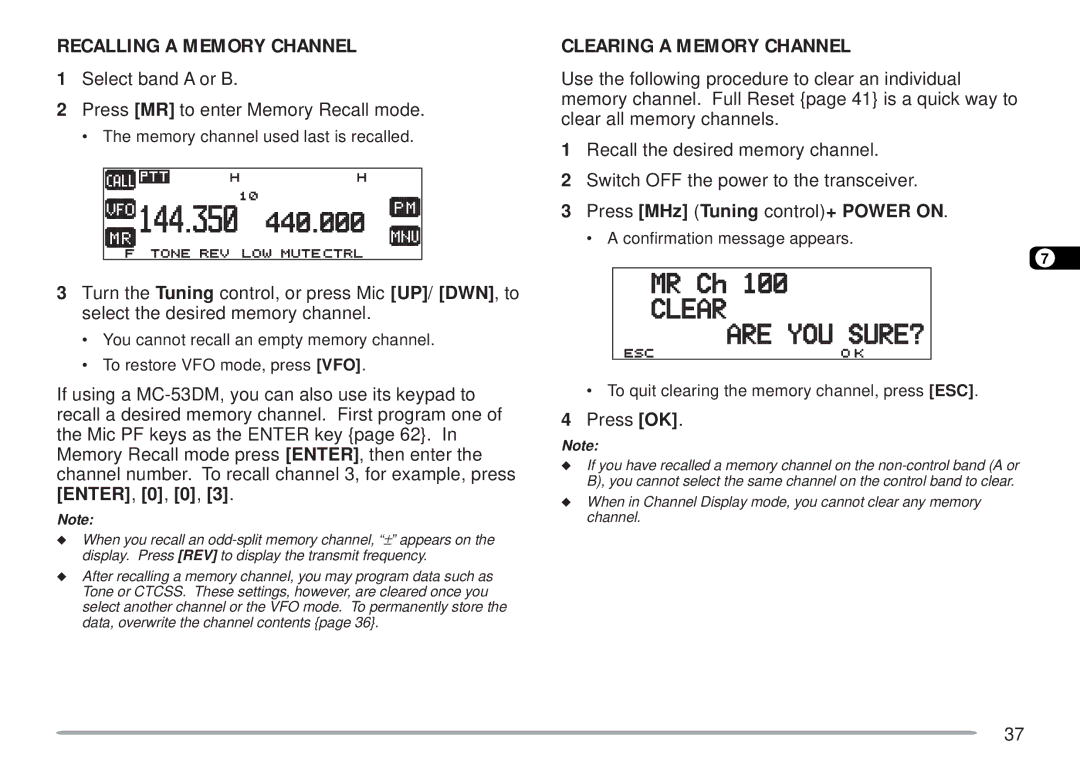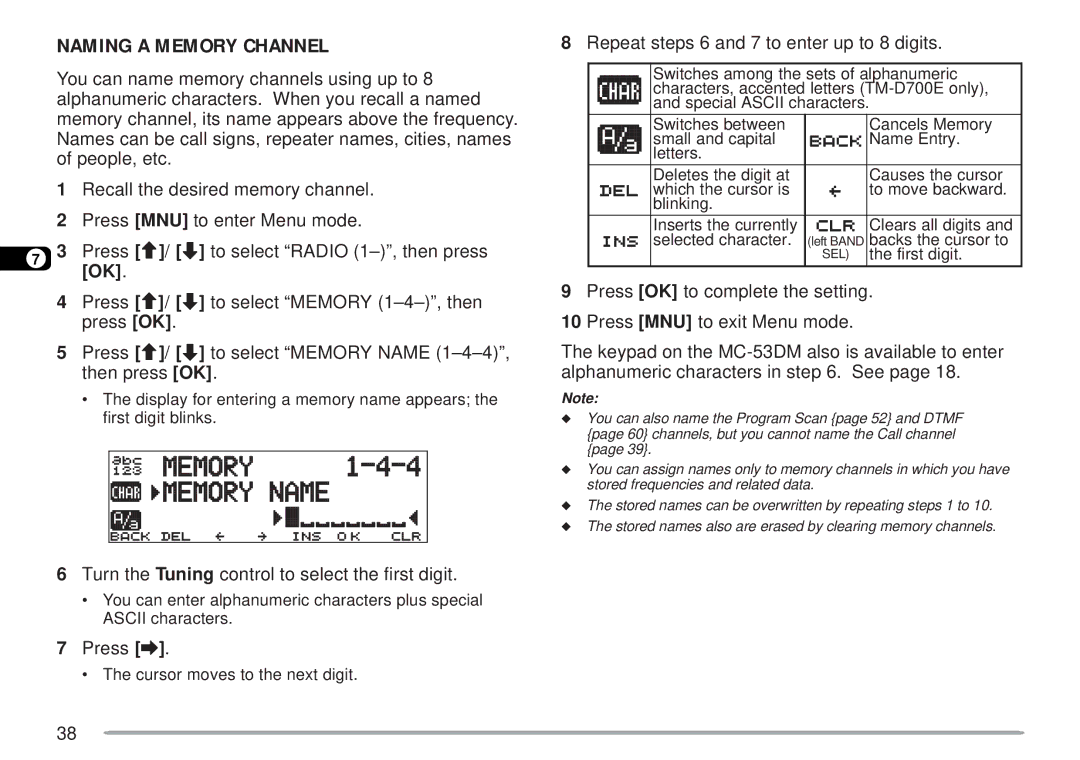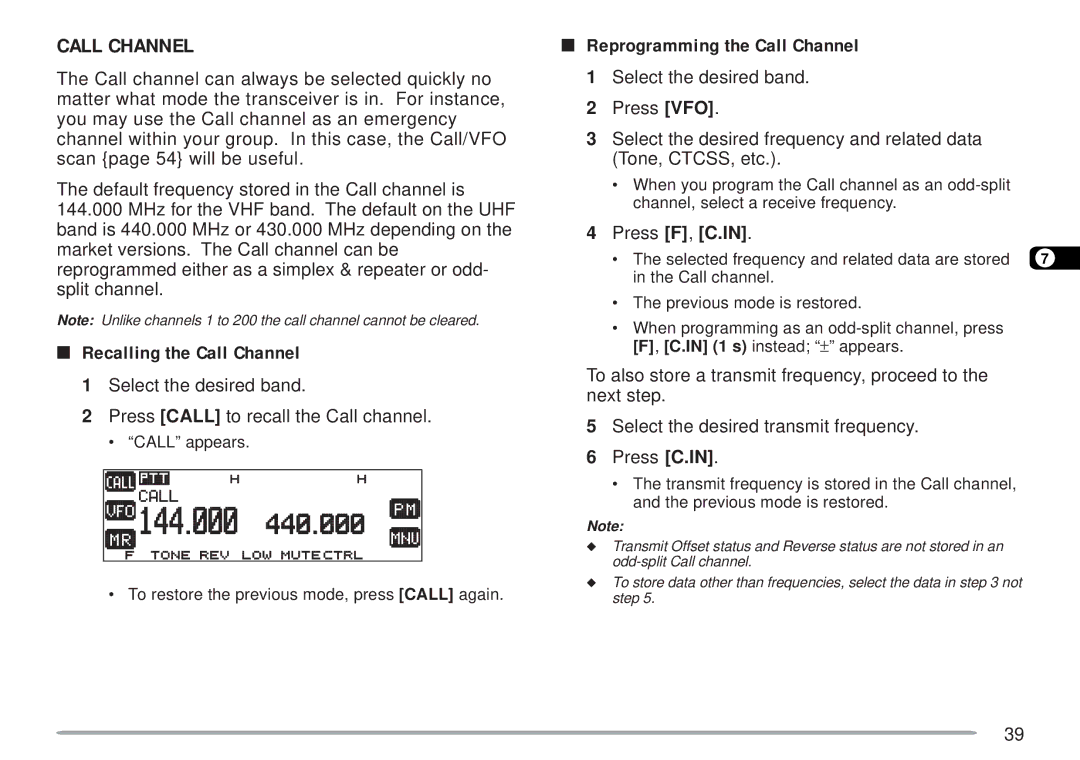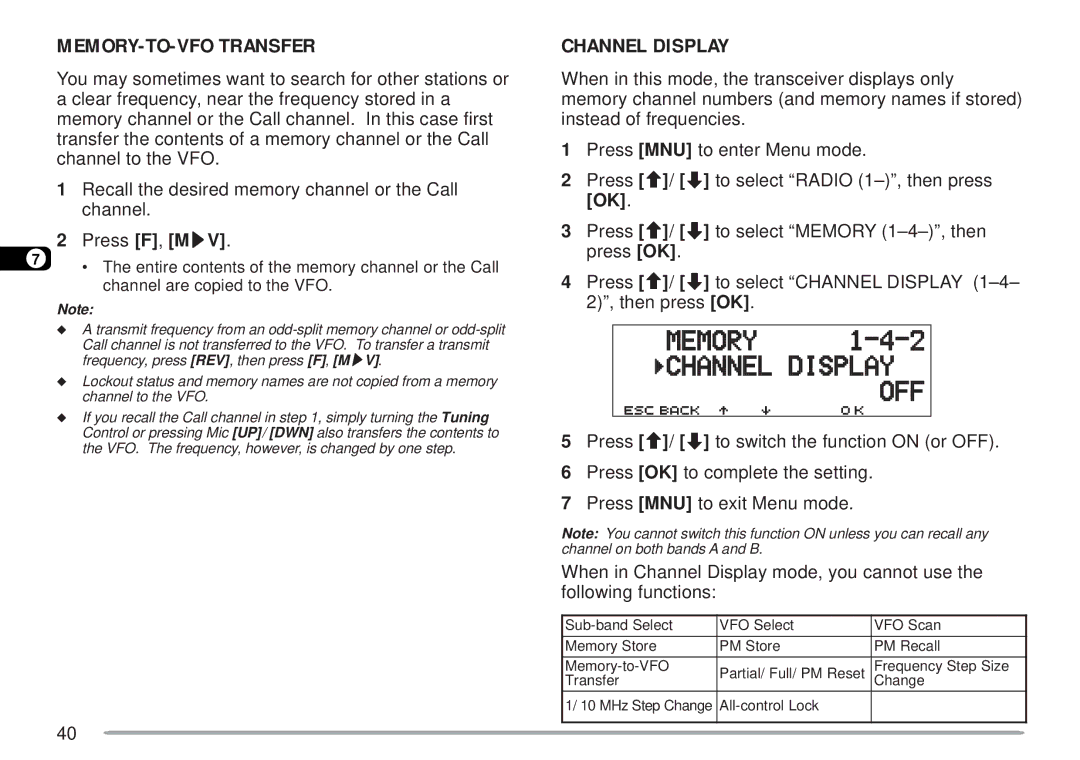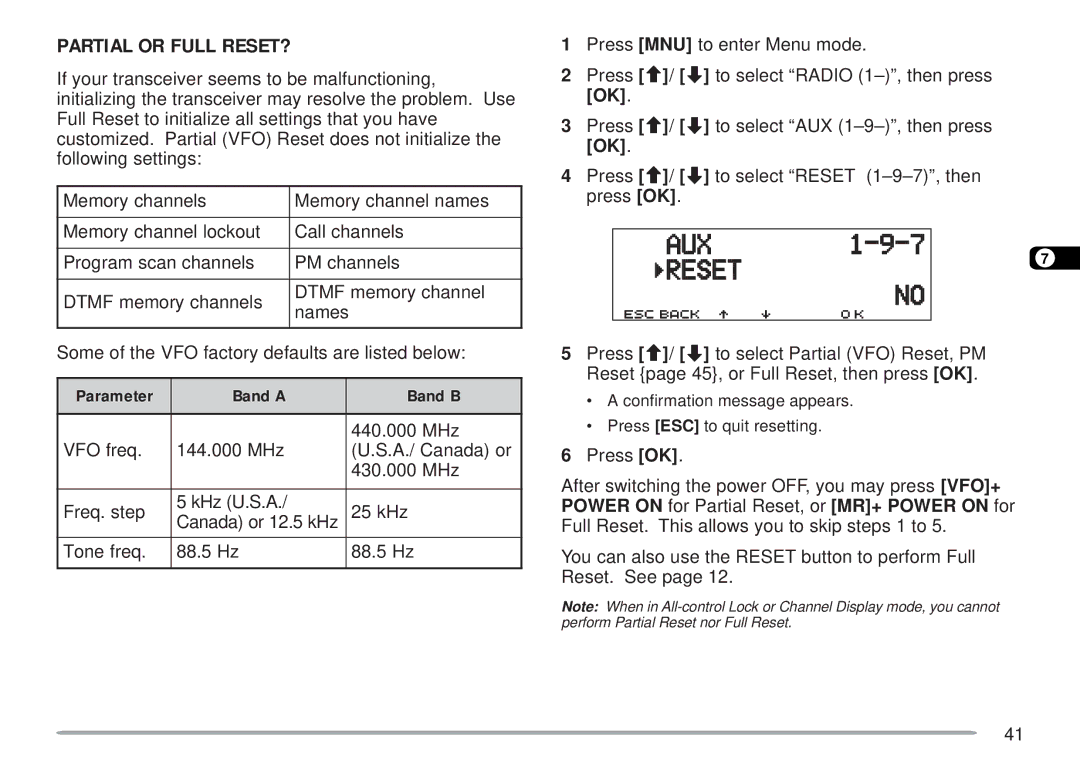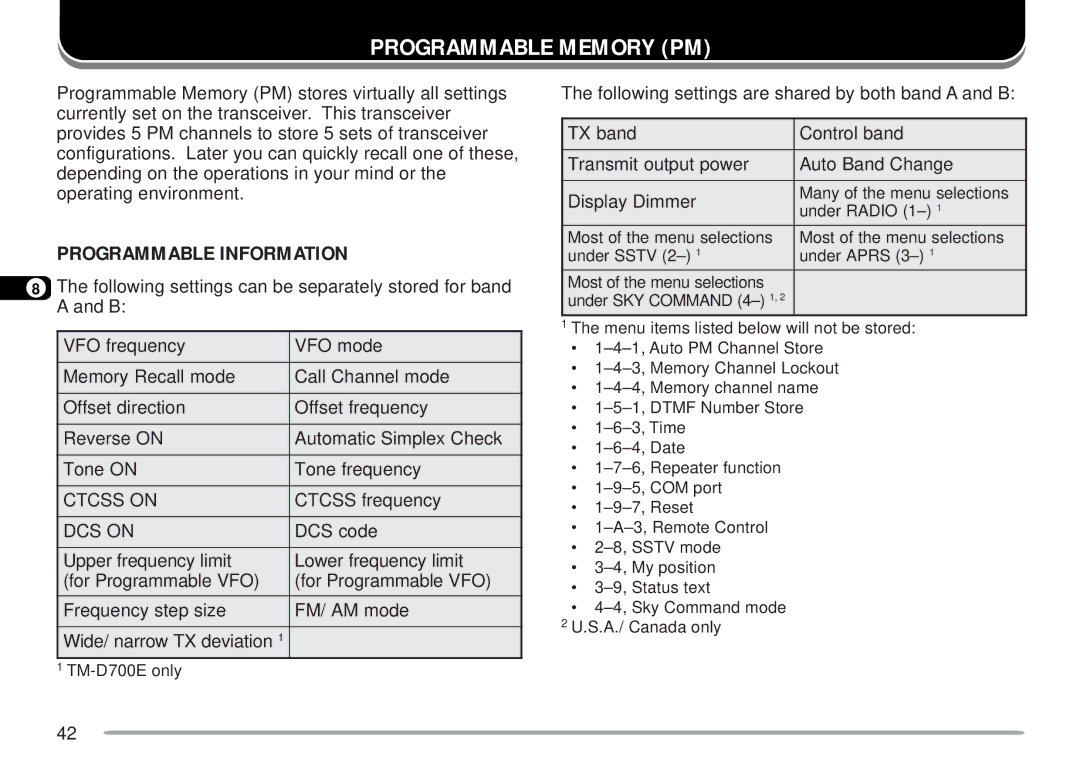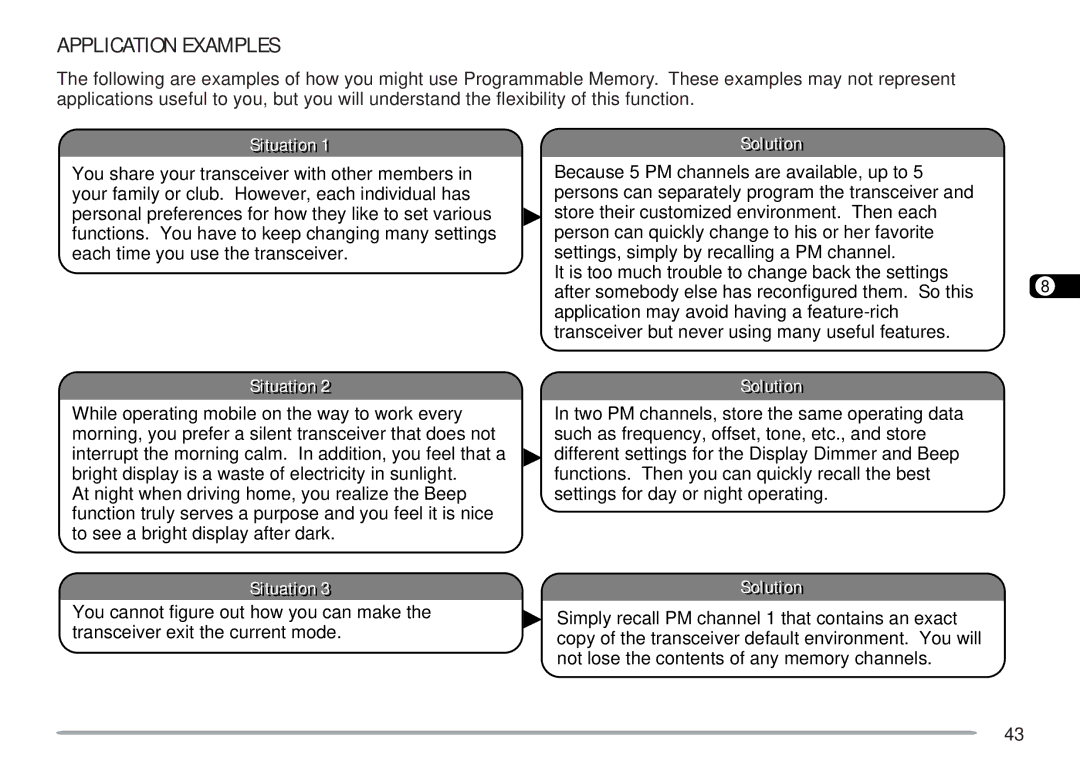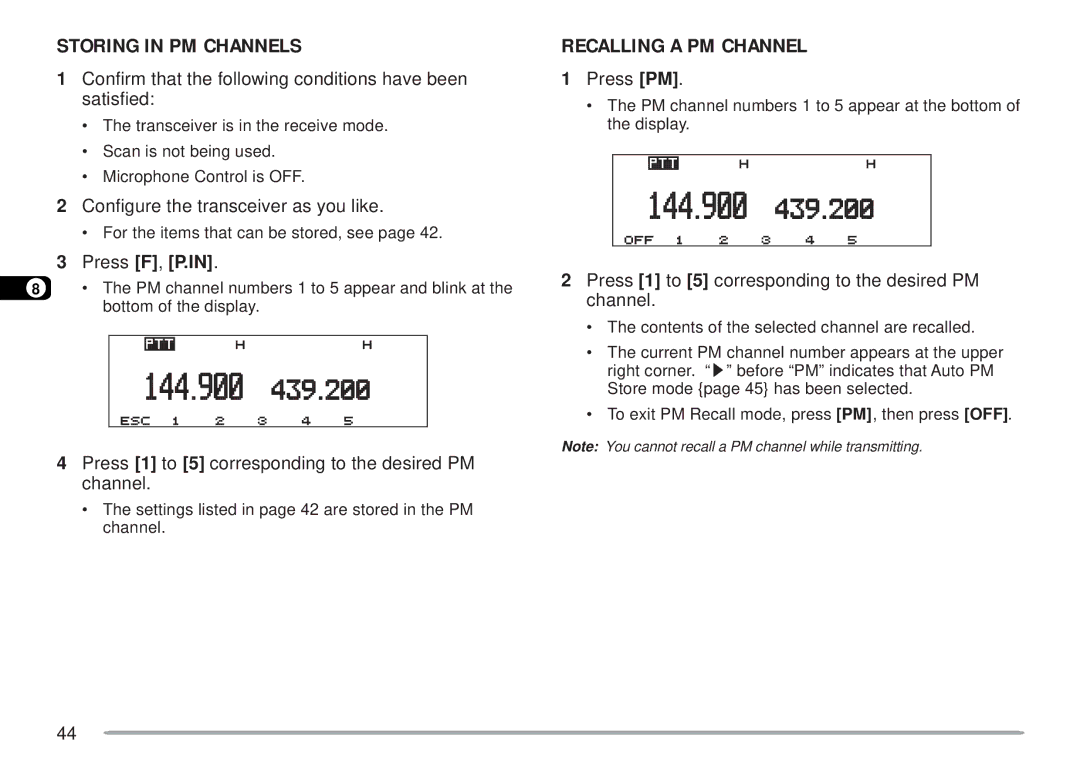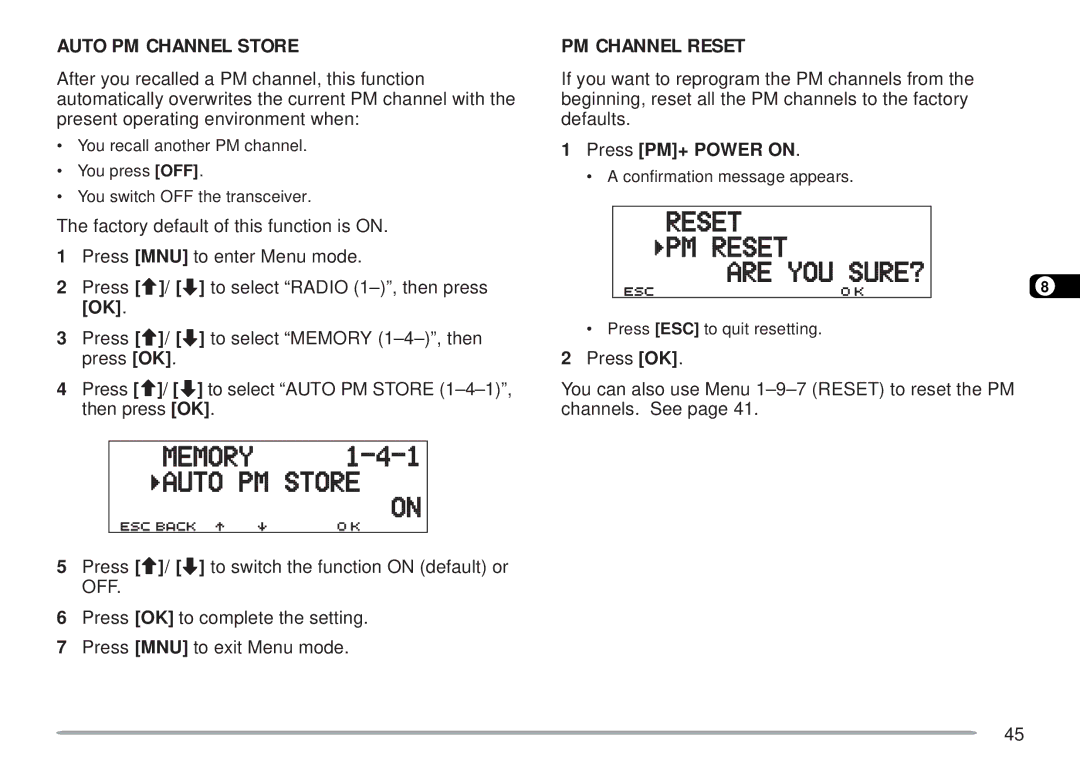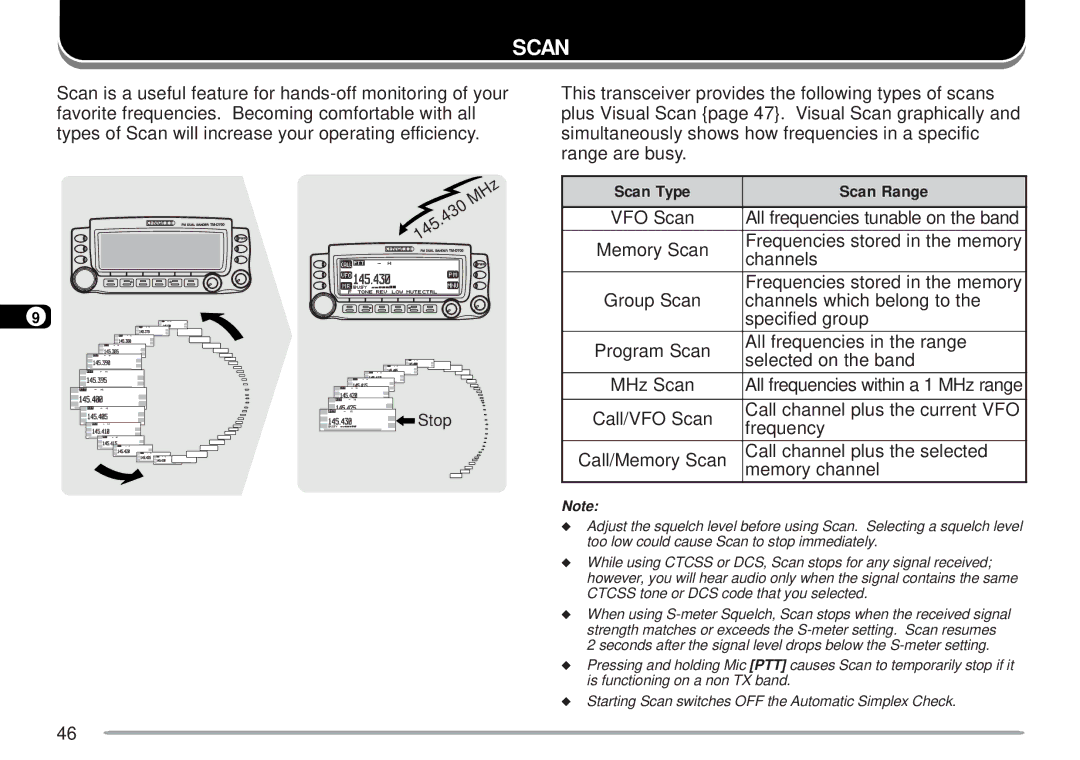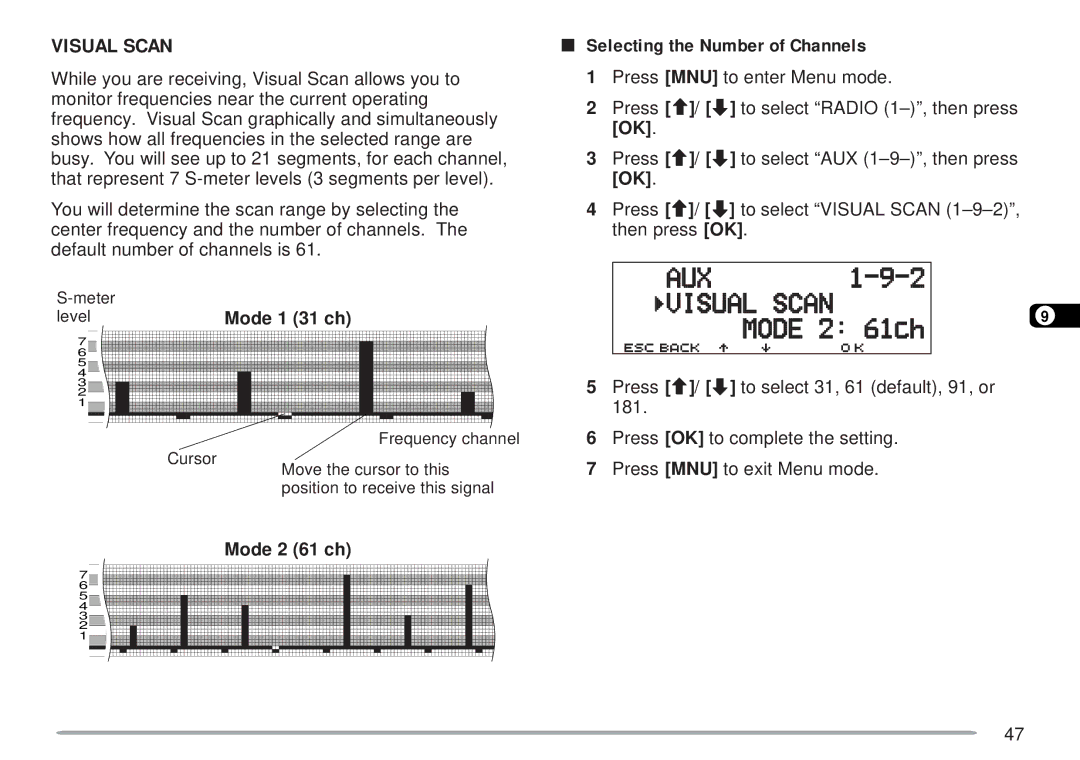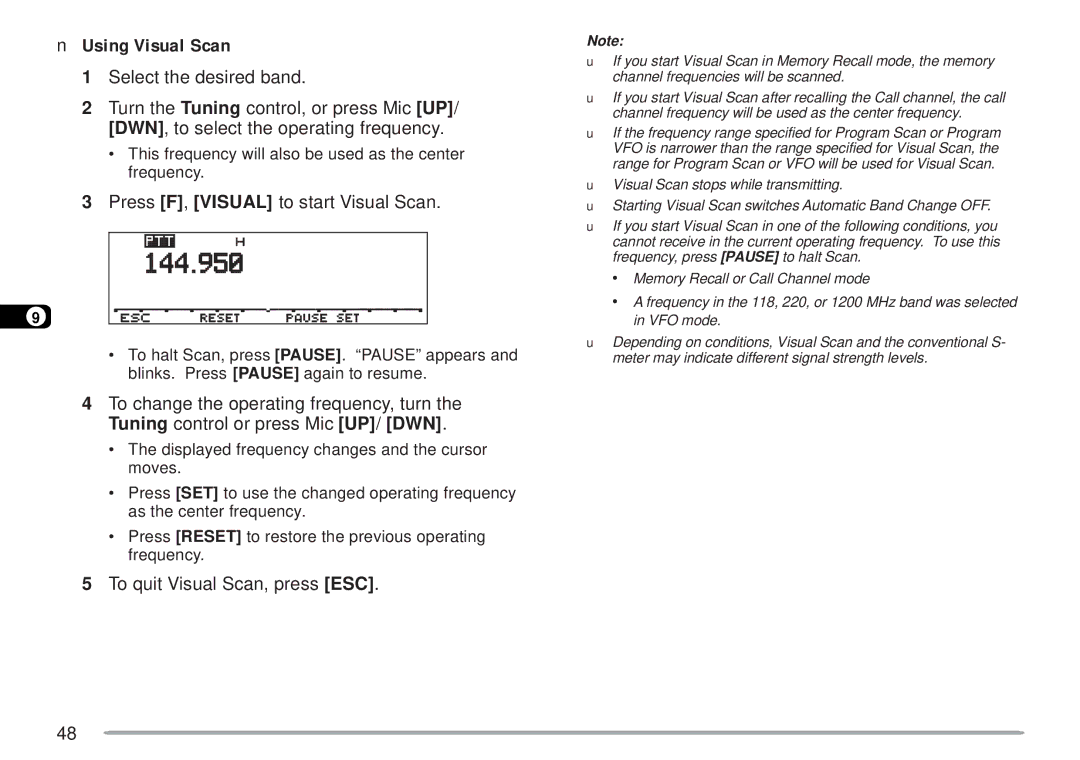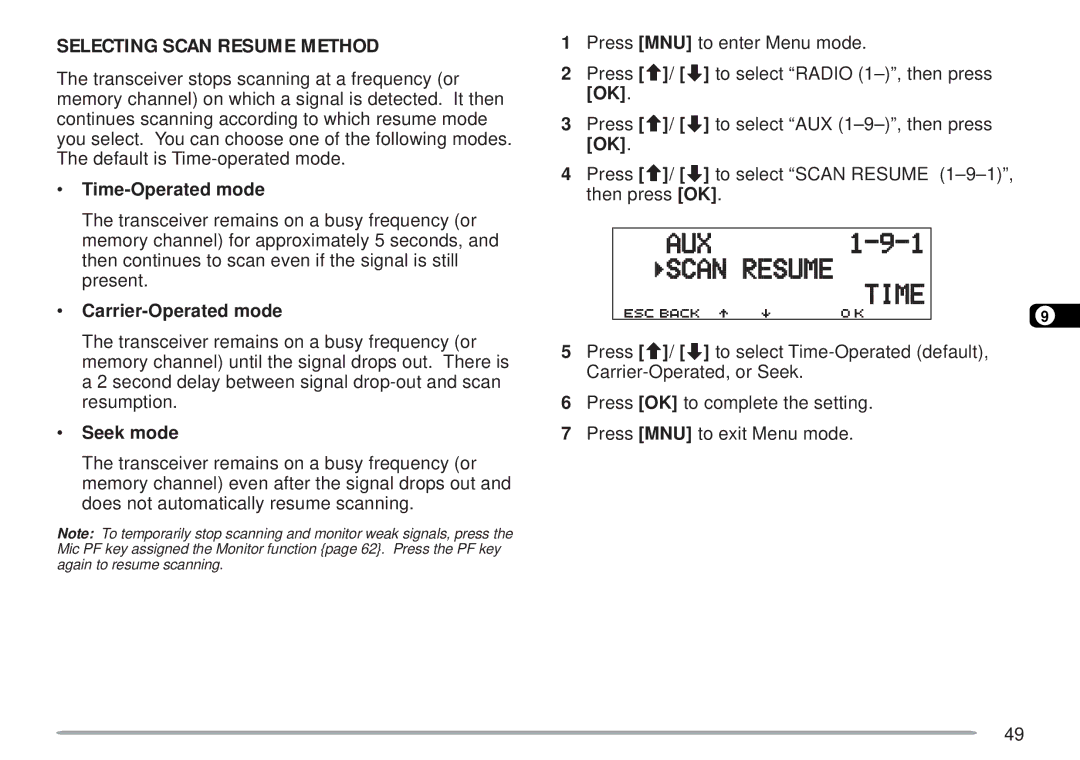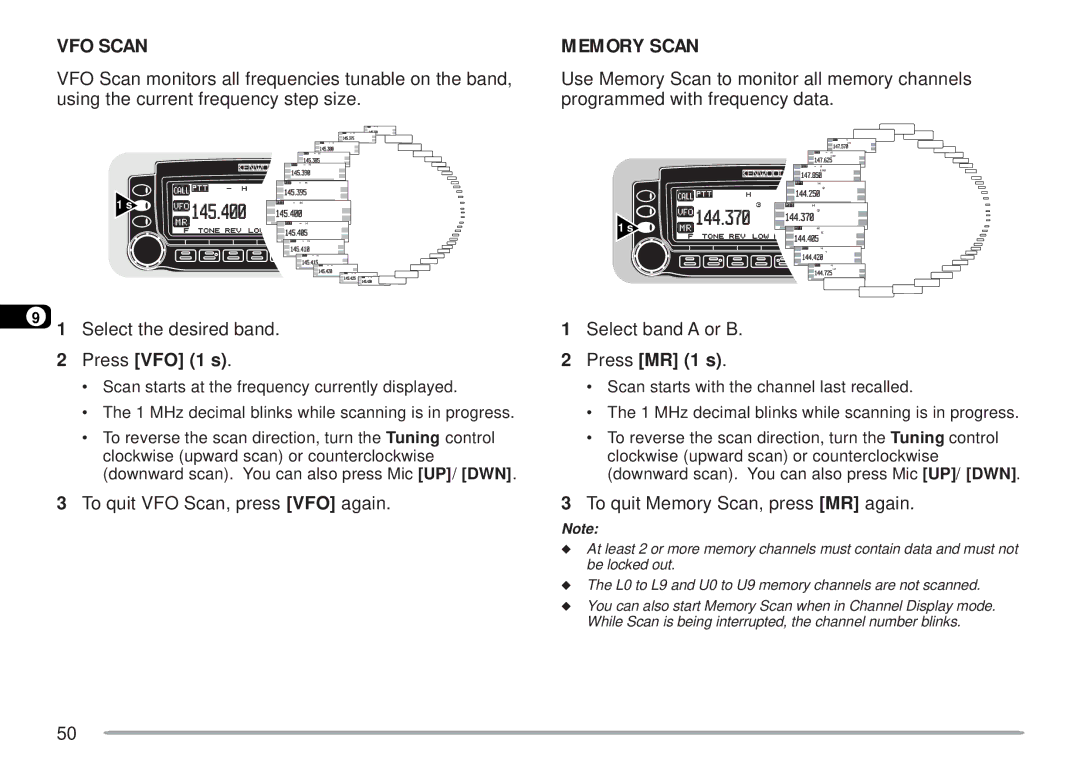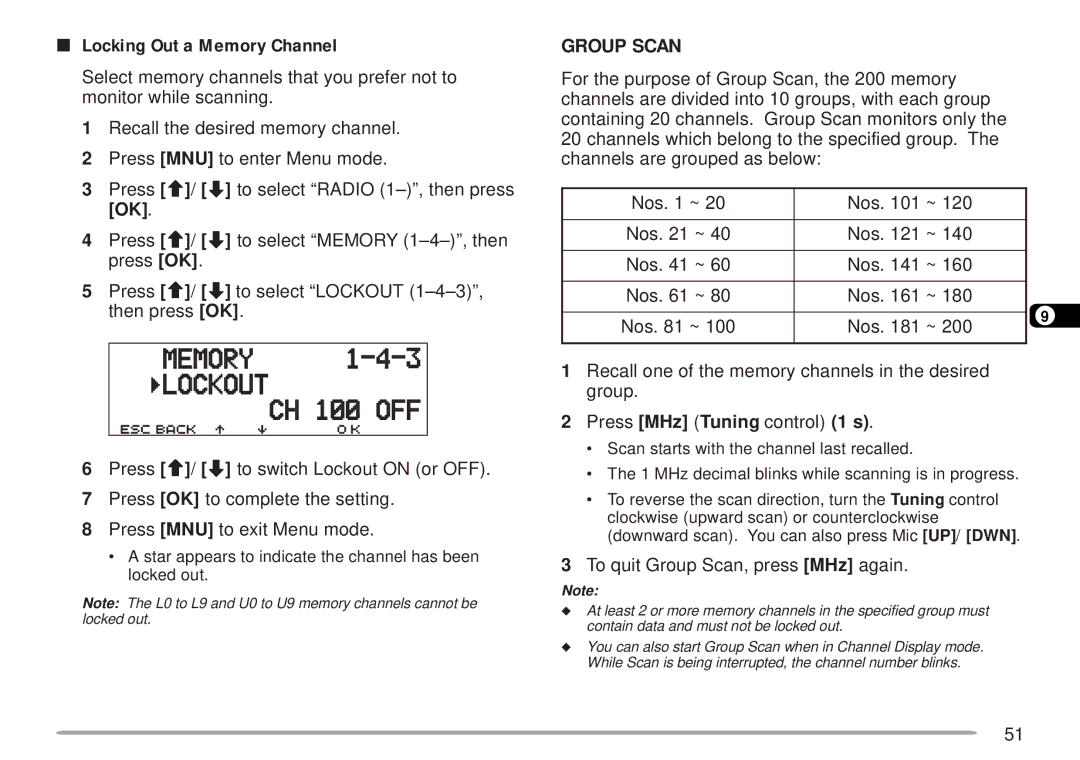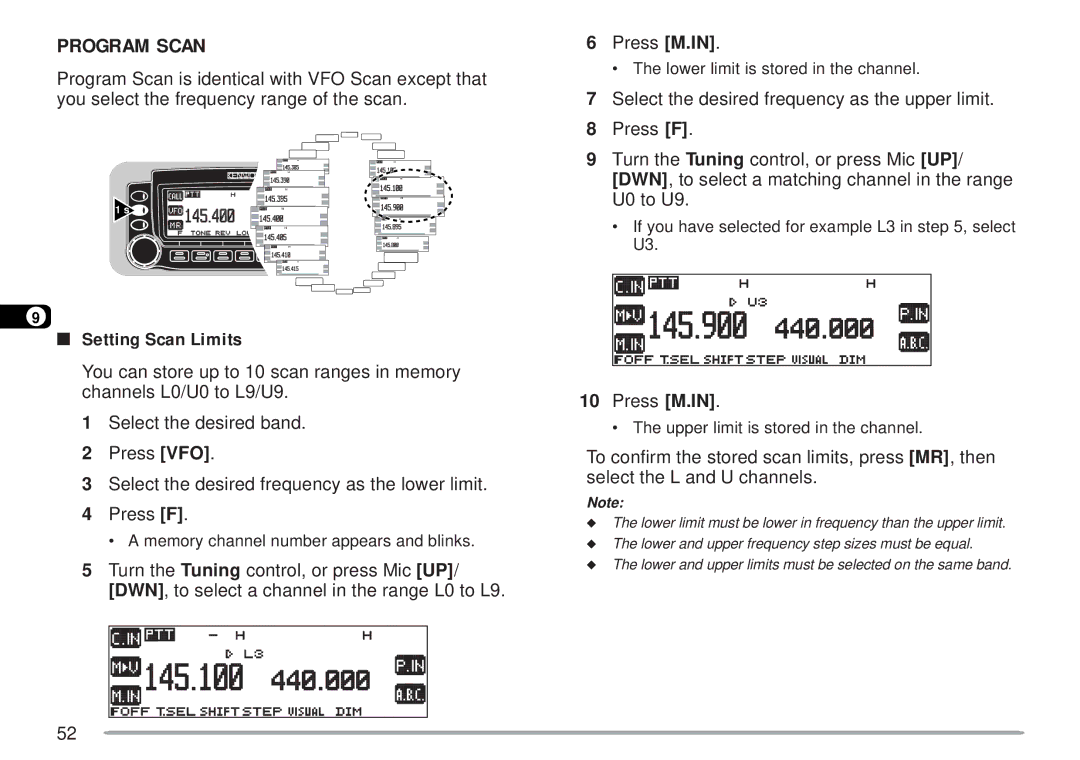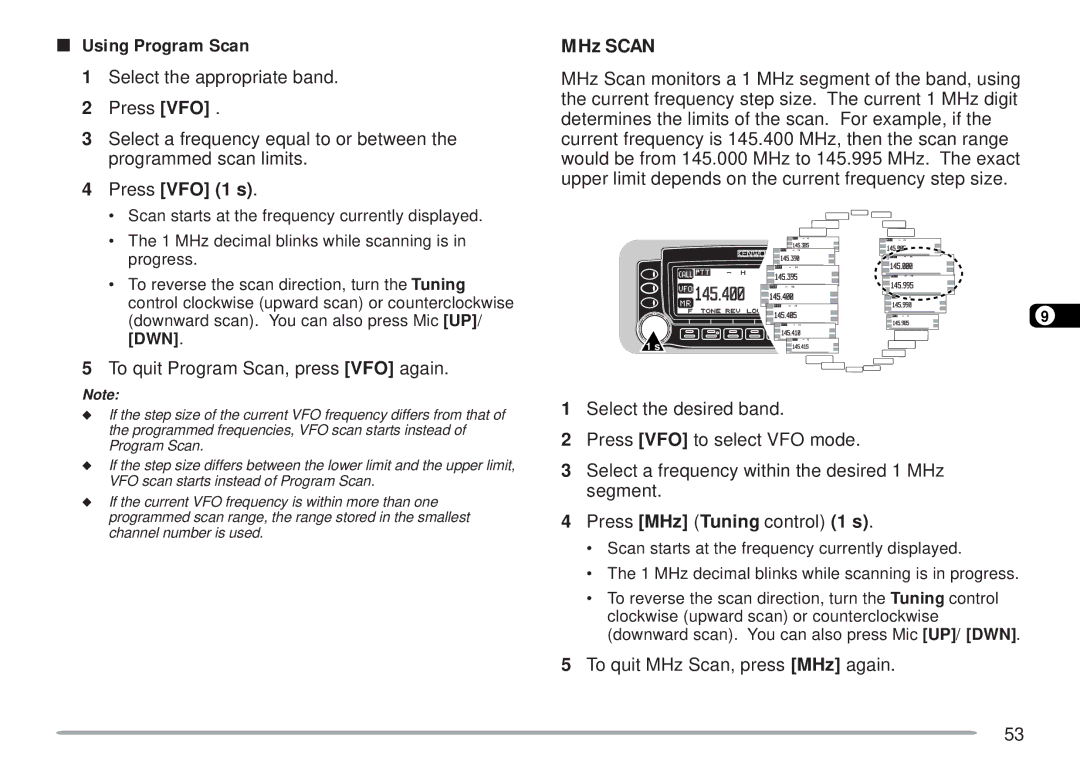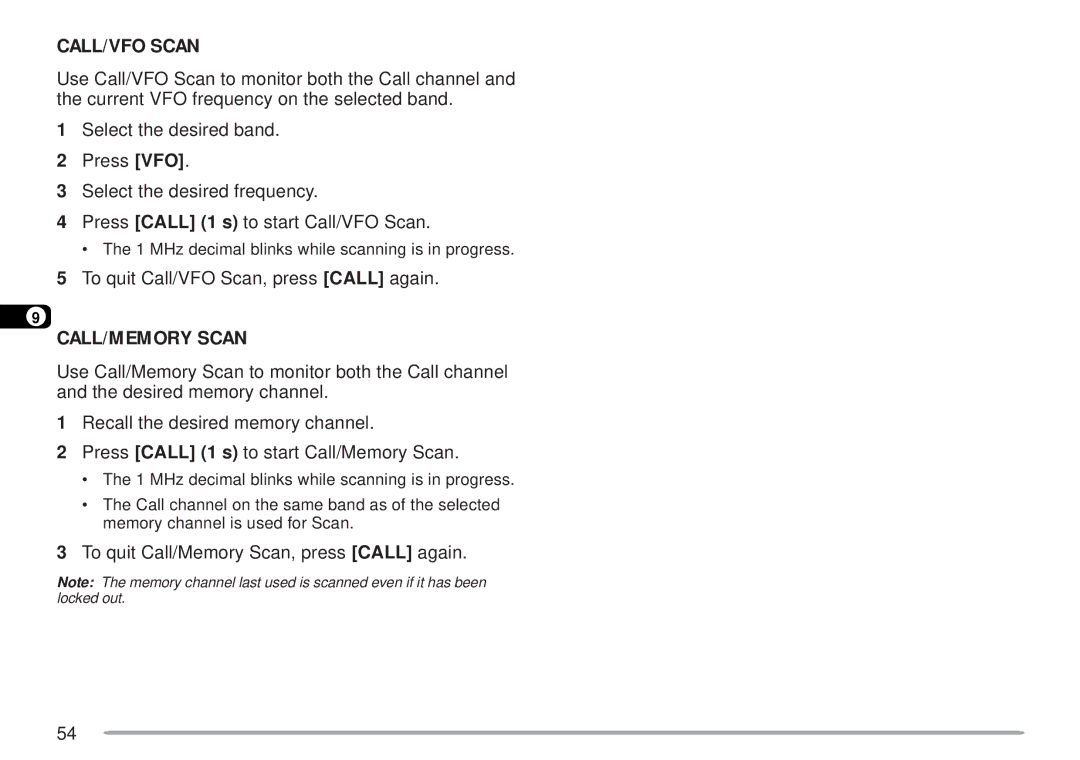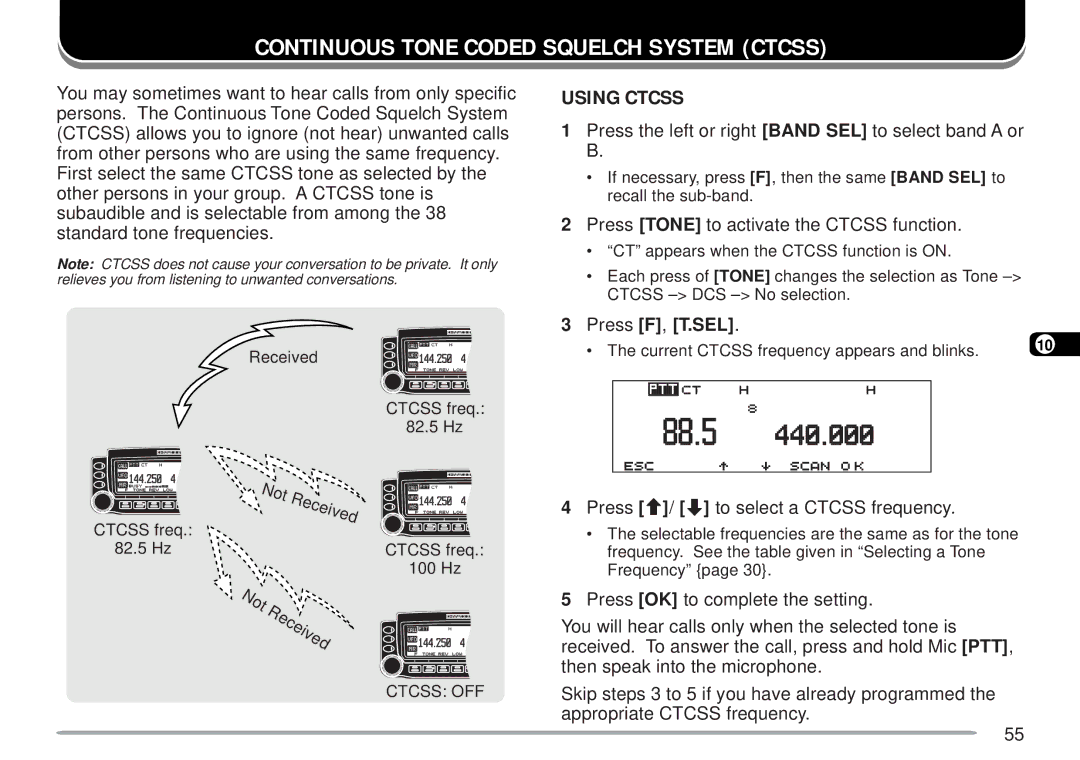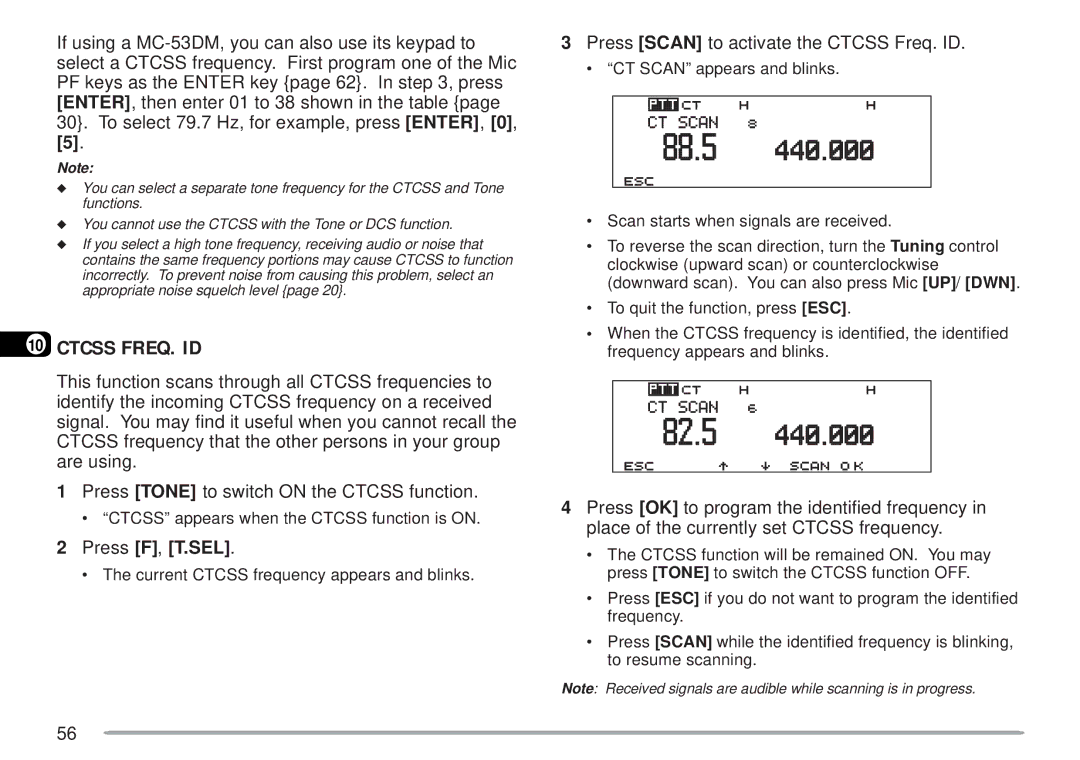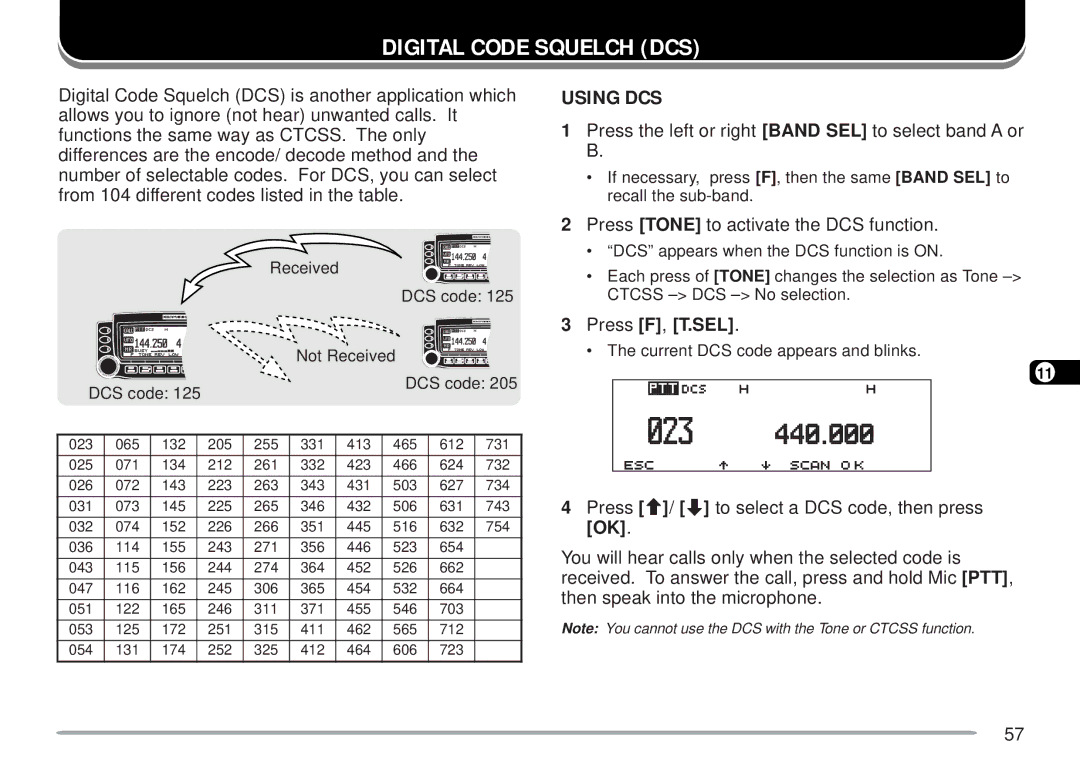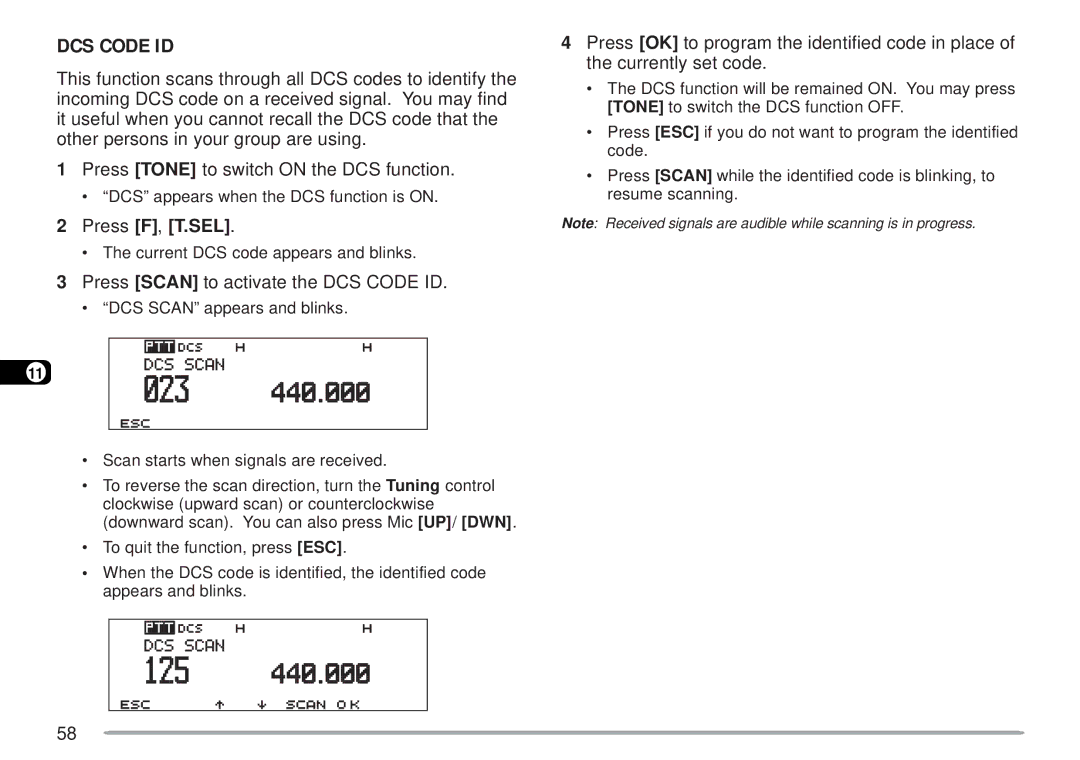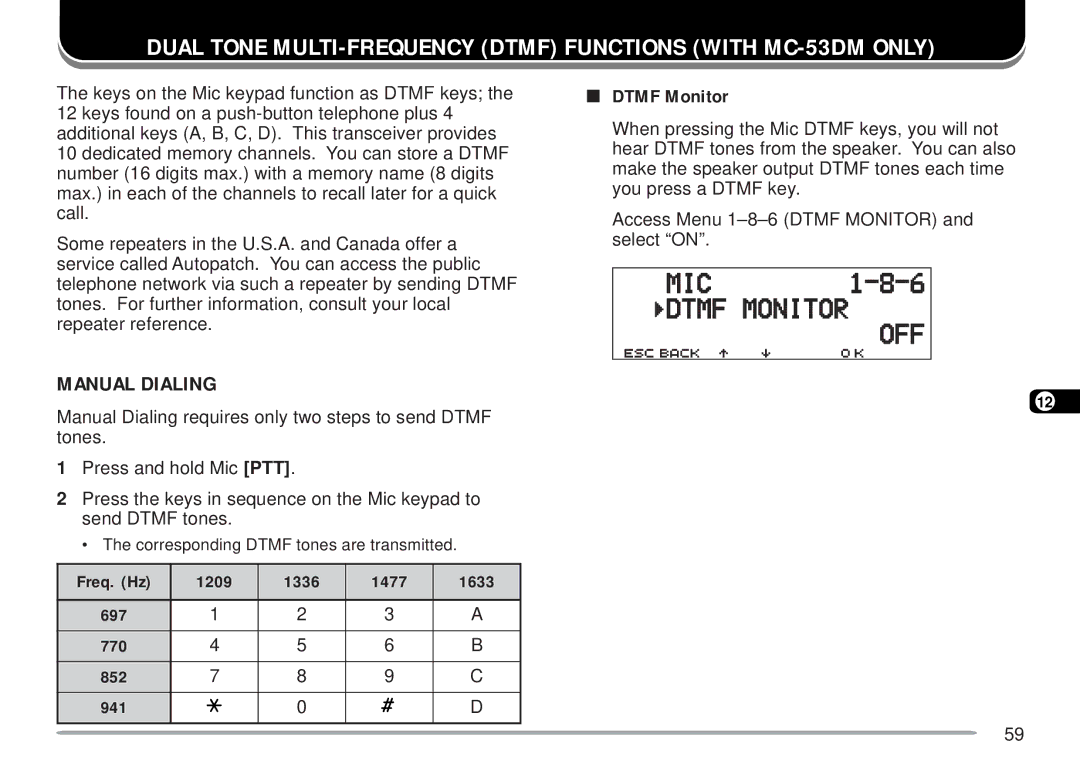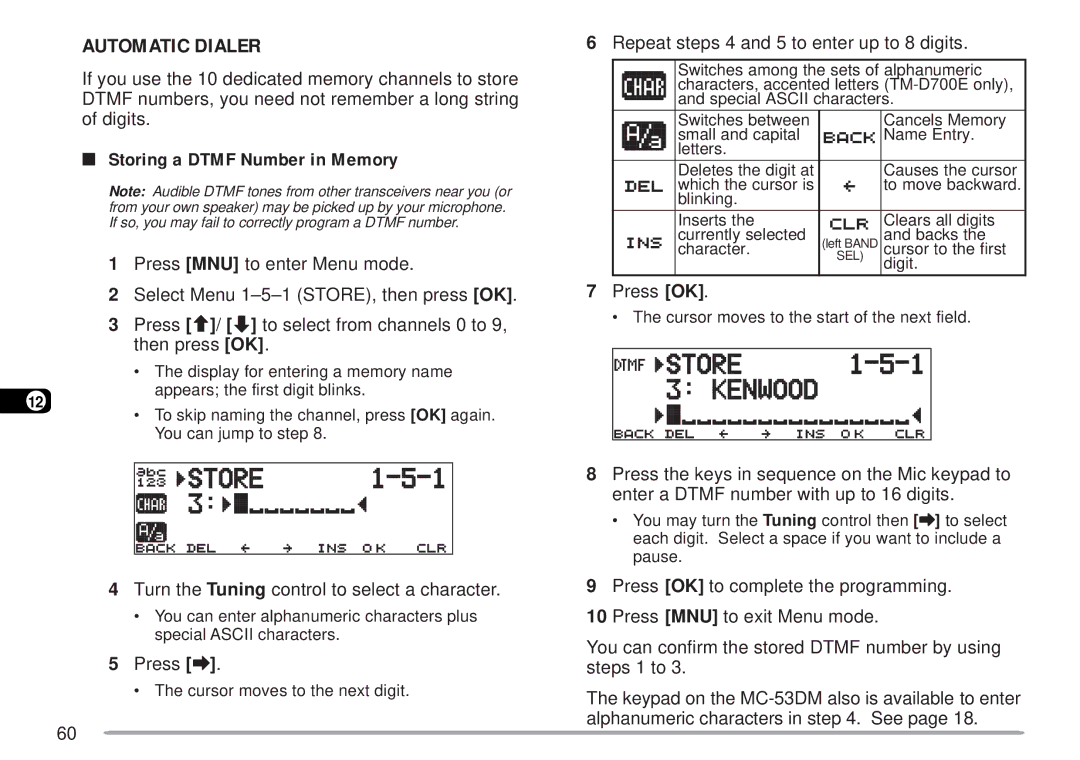Contents
TM-D700A
Thank YOU
Features
Models Covered by this Manual
One or more of the following statements may be applicable
When condensation occurs inside the transceiver
Contents
Locking Out a Memory Channel
Selecting the Number of Channels Using Visual Scan
Setting Scan Limits Using Program Scan
Recalling the Call Channel Reprogramming the Call Channel
Squelch Hang Time
Changing MULTI-FUNCTION
Conventions Followed in this Manual
Supplied Accessories
Main Unit Installation
Mobile Installation
Preparation
Slide the front panel down until its locking tab clicks
Front Panel Installation
Modular Plug Cable Connection
Fixed Station Installation
Mobile Operation
DC Power Cable Connection
PS-33 20.5 A, 25% duty cycle
Fixed Station Operation
Fuse Location Fuse Current Rating
Transceiver 15 a Supplied Accessory 20 a DC Power Cable
Antenna Connection
Replacing Fuses
External Speakers
Accessory Connections
Microphone
Ew wew w
Your First QSO
Front Panel
Getting Acquainted
3SQL control
Main UNIT- Rear
Main UNIT- Front
GPS jack
Microphone
Indicators
Basic Transceiver Modes
Button Function Display
Control Band
Band a & B
TX Band and Control Band
TX Band
MIC Keypad Direct Entry MC-53DM only
Operating Basics
Switching Power ON/OFF
Adjusting Volume
Switch on the DC power supply
Selecting a Frequency
Adjusting Squelch
When you finish speaking, release Mic PTT
Selecting Output Power
Transmitting
Press c/ d to select the appropriate level 1 No Press OK
Menu Access
Press MNU to enter Menu mode
Menu SET-UP
Level Selections Default
Menu Configuration
Memory channel name See reference Number Store
Auto PM Channel Store
Channel Display
Memory Channel Lockout
Mic VFO Key See reference
Visual Scan Automatic Power Off APO
Remote Control
Mic PF Key See reference Mic MR Key
RSV report See reference Color for RSV report
My call sign See reference Color for call sign
White
Message See reference Color for message
Packet path See reference
Commander call sign See reference Transporter call sign
Sky Command mode
Status text transmit rate See reference
Offset Programming Flow
Operating Through Repeaters
Press c / d to select Radio 1-, then press
Programming Offset
Selecting Offset Direction
Selecting Offset Frequency
Press F, T.SEL
Activating Tone Function
Selecting a Tone Frequency
Press Tone to activate the Tone function
A. and Canada versions
Automatic Repeater Offset
Transmitting a 1750 Hz Tone
Reverse Function
Press REV to switch the Reverse function on or OFF
Automatic Simplex Check ASC
Press Scan to activate the Tone Freq. ID
Tone FREQ. ID
Simplex & Repeater or ODD-SPLIT Memory CHANNEL?
Memory Channels
Parameter Simplex Odd-split
Press M.IN 1 s
Storing ODD-SPLIT Repeater Frequencies
Select the desired transmit frequency Press M.IN
Clearing a Memory Channel
Select band a or B Press MR to enter Memory Recall mode
Press MHz Tuning control+ Power on
Recalling a Memory Channel
Repeat steps 6 and 7 to enter up to 8 digits
Turn the Tuning control to select the first digit
Naming a Memory Channel
Press a
Press VFO
Call Channel
Recalling the Call Channel
Reprogramming the Call Channel
Channel Display
MEMORY-TO-VFO Transfer
440.000 MHz
Partial or Full RESET?
Parameter
Band B
Programmable Information
Programmable Memory PM
Situationit ti
Application Examples
Recalling a PM Channel
Storing in PM Channels
Press PM+ Power on
PM Channel Reset
Auto PM Channel Store
Scan Type Scan Range
Scan
Selecting the Number of Channels
Mode 1 31 ch
Mode 2 61 ch
Visual Scan
Press F, Visual to start Visual Scan
Using Visual Scan
To quit Visual Scan, press ESC
Selecting Scan Resume Method
Time-Operated mode
Carrier-Operated mode
Seek mode
Select band a or B
VFO Scan
Memory Scan
Press VFO 1 s
To quit Group Scan, press MHz again
Press MHz Tuning control 1 s
Group Scan
Locking Out a Memory Channel
Program Scan
Setting Scan Limits
Select the desired frequency as the lower limit Press F
To quit MHz Scan, press MHz again
Using Program Scan
Select the appropriate band
To quit Program Scan, press VFO again
To quit Call/Memory Scan, press Call again
CALL/VFO Scan
CALL/MEMORY Scan
To quit Call/VFO Scan, press Call again
Press Tone to activate the Ctcss function
Using Ctcss
Continuous Tone Coded Squelch System Ctcss
Press the left or right Band SEL to select band a or B
Press Scan to activate the Ctcss Freq. ID
Ctcss FREQ. ID
Digital Code Squelch DCS
Using DCS
Press Tone to activate the DCS function
Press Scan to activate the DCS Code ID
DCS Code ID
Dtmf Monitor
Manual Dialing
Freq. Hz 1209 1336 1477 1633
Repeat steps 4 and 5 to enter up to 8 digits
Turn the Tuning control to select a character
Automatic Dialer
Storing a Dtmf Number in Memory
Selecting TX Speed
Transmitting a Stored Dtmf Number
Selecting Pause Duration
VFO PF3
Programmable Function PF Keys
PF PF1
MR PF2
Press VFO Press Mic Enter
Auxiliary Functions
Press the numeric keys in sequence on the keypad
Press c/ d to select the desired step size
Changing Frequency Step Size
Programmable VFO
Press VFO Press F, Step
Display Dimmer
Auto Dimmer Change Display Contrast Adjust
POSITIVE/ Negative Reversal
Automatic Band Change A.B.C
Blanking a Band Display
Changing MULTI-FUNCTION Button Labels
PWR switch MHz SQL controls VOL controls
Press F, MHz to switch the function on or OFF
Transceiver Lock
Squelch Hang Time
Meter Squelch
Advanced Intercept Point AIP
Changing Beep Volume
Switching FM/AM Mode
KEY Beep ON/ OFF
Automatic Power OFF APO
TIME-OUT Timer TOT
Display Demonstration
POWER-ON Message
Repeat steps 3 and 4 to enter up to 8 digits
Changing TX/RX Deviation TM-D700E only
Changing Speaker Configurations
Connection Mode Band a Band B
Speaker Mute
Microphone Control with MC-53DM only
Preparation
Wireless Remote Control U.S.A./ Canada only
Digits Enter or VFO UP/ Down
Access Menu 1-A-3 Control and select on
Control Operation
Select the receive frequency on band B UHF
Freq
SKY Command 2 U.S.A./ Canada only
TM-D700A
Connecting the Transporter with the HF Transceiver
17 r
Preparation Flow
On Transporter
On Commander
Programming Call Signs
Programming a Tone Frequency
RIT ON/ OFF XIT ON/ OFF
Mic Key Function
T y
Repeater Function U.S.A./ Canada only
Band SEL
VS-3 Voice Synthesizer Optional
MC-45 MC-53DM MC-80 MJ-88 MJ-89
Optional Accessories
PS-33 SP-50B VS-3 VC-H1
PG-2N PG-3B PG-4X PG-5A
Replace the lower cover 6 screws
Installing Options
Installing the PG-4X Extension Cable KIT
Remove the 6 screws from the lower cover of the main unit
Connections Using Two Sets of PG-4X Kits
Connections Using One Set of PG-4X Kit
Cleaning
Maintenance
Service
Service Note
Problem Probable Cause Corrective Action
Troubleshooting
COM Port
VHF Band UHF Band
Specifications
Sub VHF or UHF band
Transmitter
Index

